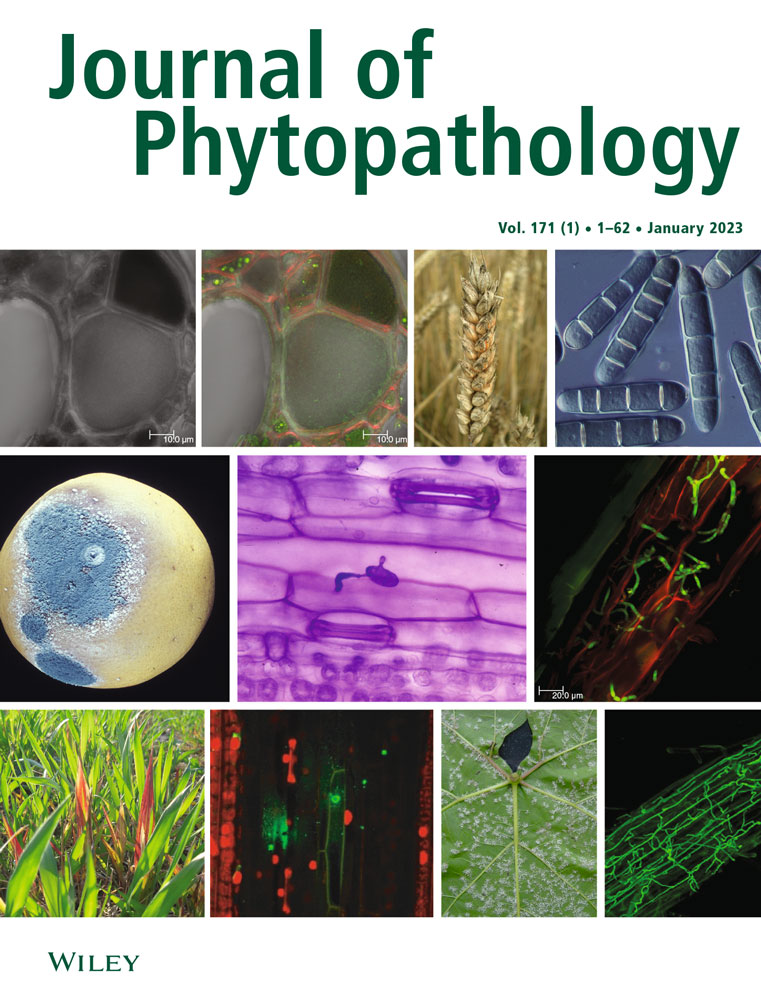Ver ítem
- xmlui.general.dspace_homeCentros e Institutos de InvestigaciónCIRN. Centro de Investigaciones de Recursos NaturalesInstituto de Clima y AguaArtículos científicosxmlui.ArtifactBrowser.ItemViewer.trail
- Inicio
- Centros e Institutos de Investigación
- CIRN. Centro de Investigaciones de Recursos Naturales
- Instituto de Clima y Agua
- Artículos científicos
- Ver ítem
Modelling of the effects of environmental factors on rice grain discoloration incidence in Corrientes province, Argentina
Resumen
Rice grain discoloration (RGD) is a disease of complex aetiology for which there are no resistant varieties. Due to the need to better define the environmental conditions that favour the disease, the aims of this work were to (i) identify the predominant
fungi associated, (ii) determine the meteorological variables most closely related, and (iii) develop preliminary weather-based
models to predict binary levels of RGD incidence. After analysing 123 rice
[ver mas...]
Rice grain discoloration (RGD) is a disease of complex aetiology for which there are no resistant varieties. Due to the need to better define the environmental conditions that favour the disease, the aims of this work were to (i) identify the predominant
fungi associated, (ii) determine the meteorological variables most closely related, and (iii) develop preliminary weather-based
models to predict binary levels of RGD incidence. After analysing 123 rice grain samples under natural infection conditions from
rice-cropping regions throughout Corrientes province, Argentina, we found that RGD was mainly associated with Alternaria padwickii (14.2%) and Microdochium albescens (13.7%). The strongest associations between weather variables and RGD incidence were observed in a susceptible critical period (Scp) that extended from the rice flowering stage until 870 accumulated degree days (Scp lasting 32 days, ±7 days). The binary response logistic model including the weather variables DPrecT (which combined the effect of the simultaneous daily occurrence of precipitation lower than 12 mm and air temperature between 13 and 28°C), and DDMnT (sum of the exceeding amounts of daily min temperature from 23°C), was the most appropriate, showing prediction accuracy (PA) values of 84.6%. The univariate model that included DPrecT presented a PA of 82.1%. The logistic regression techniques here used to develop weather-based models to estimate the probabilities of occurrence of binary levels of RGD can not only help to clarify and quantify the environmental effect on the development of RGD but also be useful tools to be included in future management strategies.
[Cerrar]

Autor
Dirchwolf, Pamela M.;
Moschini, Ricardo Carlos;
Gutierrez, Susana A.;
Carmona, Marcelo Anibal;
Fuente
Journal of Phytopathology 171 (1) : p. 12-22. (January 2023)
Fecha
2023-01
Editorial
Wiley
ISSN
0185-3309
2007-8080
2007-8080
Formato
pdf
Tipo de documento
artículo
Palabras Claves
Derechos de acceso
Restringido
 Excepto donde se diga explicitamente, este item se publica bajo la siguiente descripción: Creative Commons Attribution-NonCommercial-ShareAlike 2.5 Unported (CC BY-NC-SA 2.5)
Excepto donde se diga explicitamente, este item se publica bajo la siguiente descripción: Creative Commons Attribution-NonCommercial-ShareAlike 2.5 Unported (CC BY-NC-SA 2.5)


